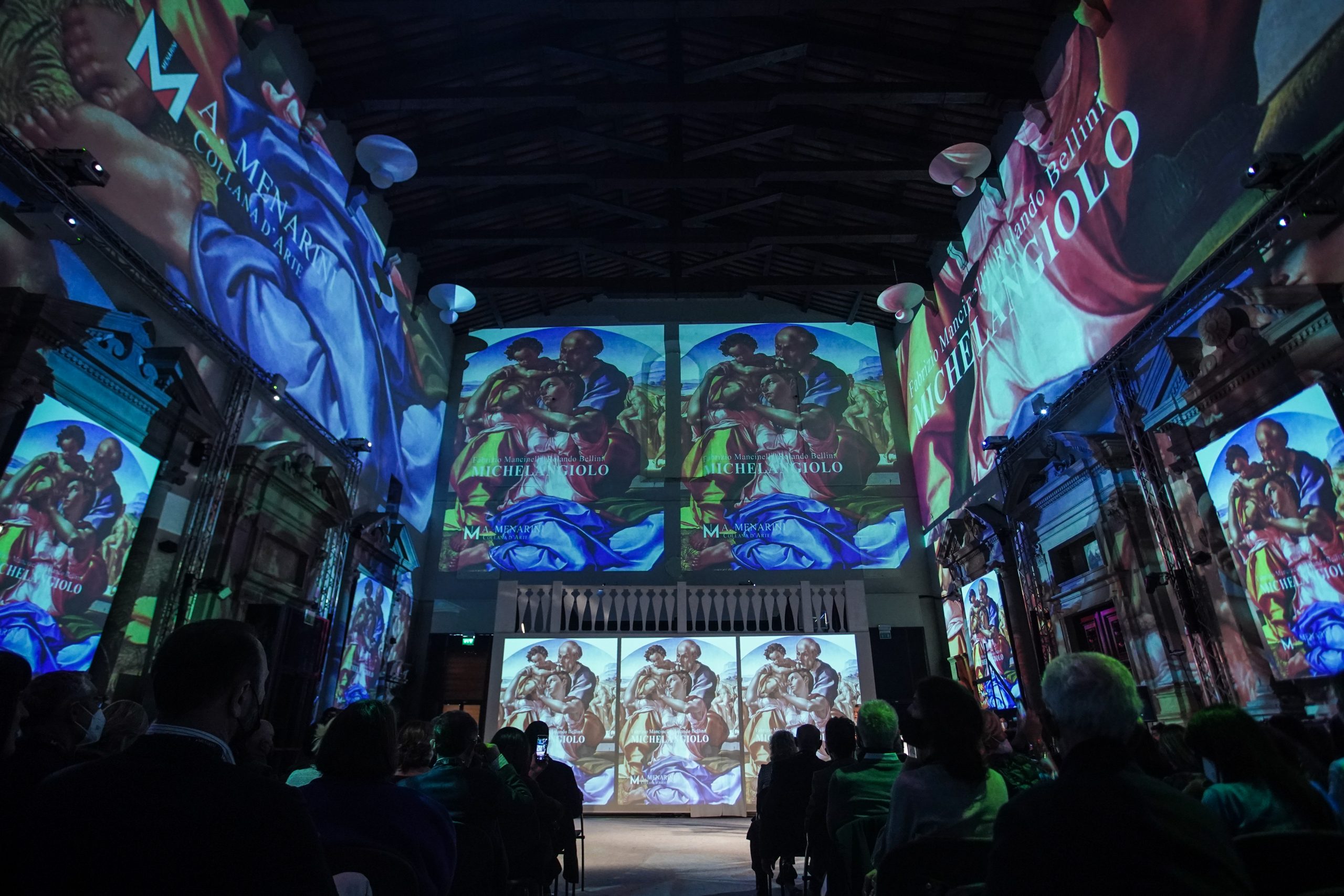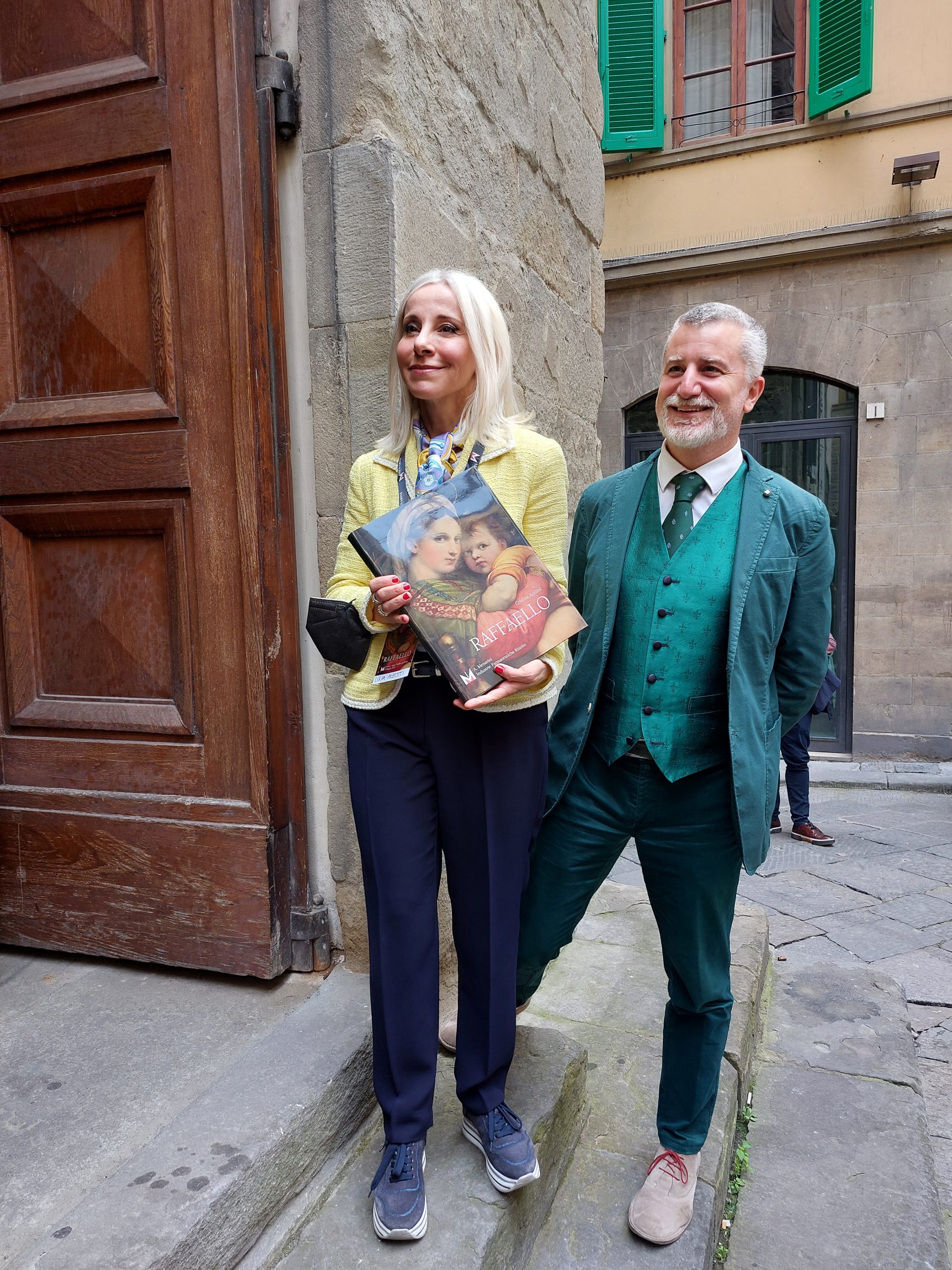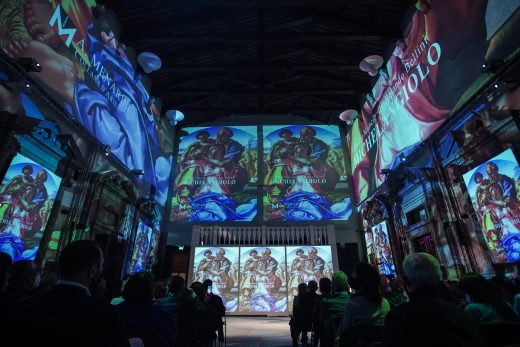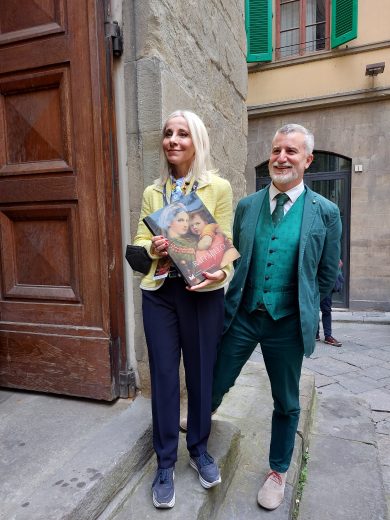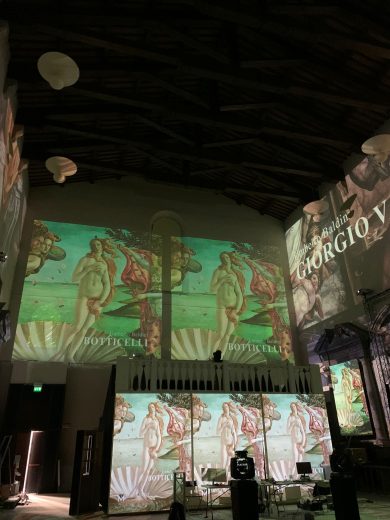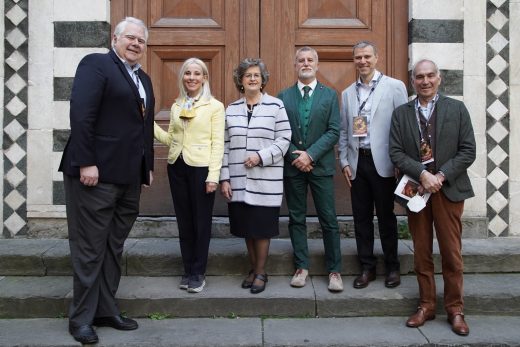Raphael’s art highlighted in Florence with a new Menarini Art Volume

A sublime painter, innovative architect and protector of antiquities, Raffaello Sanzio, also known as Raphael, is one of the undisputed masters of the Renaissance in Italy. The Menarini Art Volume presented on Sunday, May 8th, in the heart of Florence’s historical center, is dedicated to him.
The church of Santo Stefano al Ponte welcomed the public with a special installation inspired by the extraordinary artist from Urbino. Evocative video projections and the notes of pianist Sebastian Emilio Suvini accompanied the  audience’s journey to rediscover the figure of Raphael and his masterpieces. An opportunity to delve into both the man and the artist, thanks to the invaluable contribution of experts such as the author Cristina Acidini and art historian Giovanni Carlo Federico Villa.
audience’s journey to rediscover the figure of Raphael and his masterpieces. An opportunity to delve into both the man and the artist, thanks to the invaluable contribution of experts such as the author Cristina Acidini and art historian Giovanni Carlo Federico Villa.
“What does it take to become Raffaello? It takes a mix of ingredients: an amazing natural talent, being born in the right place and at the right time, an excellent education and also a bit of luck.” This is how Dr. Acidini opened the story in pictures of the life of this exceptional painter.
Originally from Urbino, a contemporary of Leonardo Da Vinci and Michelangelo Buonarroti, Raffaello moved to Florence driven by the desire to get to know these exceptional artists and admire their prodigious talent in person. In Florence he worked mainly for wealthy private clients, contributing to the lively cultural atmosphere of the city at that time. Some of his most famous work – such as the Madonna of the Goldfinch and the portraits of Agnolo Doni and Maddalena Strozzi – date back to Sanzio’s Florentine stay; these works, together with many others, mark the biographical and professional narration of this unrivaled master of harmony in Menarini’s Art Volume. And the link between Raphael and the city of Florence does not end there.
“Another detail that makes me very proud is that Florence is the city that has the greatest number of Raphael’s easel paintings, which can be admired between the Galleria Palatina and the Uffizi Gallery – explained Cristina Acidini, – It is always worth repeating these visits, even for those who already know this aspect of Italian art, because it’s a true cure for the soul through beauty.”
Rapahael’s legacy does not end with the incredible art heritage he left behind. Sanzio managed to transform the social role of the artist, by becoming the model of an independent personality who refused to operate in a traditional workshop and who put himself at the head of a team of collaborators.
“Raphael – said Cristina Acidini, – is among those people, like Leonardo and Michelangelo, who established a dialogue with the most powerful personalities of the time, and I believe that this element is still relevant today. In other words, these are the people who have made the artist a leading figure.”
The many paintings with different subjects and patrons included in the Art Volume reflect Raphael’s distinctive traits and style. The painter was not only a creator of beauty, but also its passionate guardian. It is no coincidence that Sanzio is linked with the creation of the position of Prefect for the Antiquities, which was assigned by the Pope himself: a sort of ante litteram superintendence of cultural heritage that has its own space in Cristina Acidini’s Art Volume. “At the time – explained the author of the monograph, – what remained of Ancient Rome was being stripped away: bronzes were being melted down, temples were being dismantled in order to reuse the materials in an unscrupulous manner. Raphael is the first authoritative voice to stand up against the senseless disfigurement of Roman ruins.”
This is the bridge that connects this extraordinary figure of art history to the present day, and to the needs of a country rich like no other in cultural treasures. With the Volume on Raphael, the Menarini Group adds a piece to its prestigious series of monographs.
“We feel part of our country, we are not living in an isolated bubble. – explained Lucia Aleotti, shareholder and member of the Menarini board, – Our main mission is to find new cures for patients, invest in research, increase our patients’ wellbeing and make a contribution in terms of jobs, wealth and healthcare for all. But we are also part of a context that speaks to us about art everyday, as soon as we open our windows. It’s a multifaceted world, and this is how the Art Volumes embody our love for this aspect of our country.”
The Menarini Art Volumes have been published since 1956, and in more recent years they have also seen a reinterpretation with the Menarini Pills of Art, short YouTube videos that guide the audience to the discovery of masterpieces of the Italian Renaissance. The videos are available in eight languages, and there is also a version for younger viewers, the Menarini Pills of Art Junior. Worldwide, the Pills have recorded 28 millions views to date.
Highlighting Italian art is therefore one of the Menarini Group’s cornerstones, a unique enterprise in the European panorama for its longevity and for the diversity of the undertakings. The Art Volumes are a testament to this mission: a project that for almost 70 years has seen the Group in the front line in preserving and celebrating Italian culture both abroad and within its borders. Because telling the story of Italy’s most important artists, in the words of Giovanni Carlo Federico Villa, “means telling the story of the Italy of the Hundred Cities and of many local realities. Narrating them through great art historians, but also through great pictures, means actively protecting them and making each one of us become the guardian not only of our own memory, but also of our own territory.”

